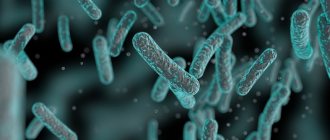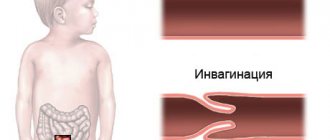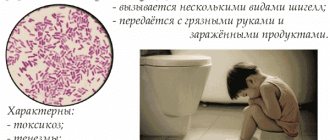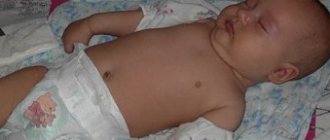Probably every mother has encountered the problem of constipation in a child at least once in her life. How to treat, or even better, prevent such a condition? In order to answer this question, you must first understand why it occurs and why it bothers the baby so much. Let's start with this.
- What is considered constipation and how does it affect the child’s body?
- What happens: forms of constipation in children
- Causes
- Clinical manifestations
- Examination and diagnosis
- First aid
- What to do, how to help your child Correction of nutrition
- Medications
- Physiotherapy, massage and therapeutic exercises
What is considered constipation and how does it affect the child’s body?
From a physiological point of view, constipation is considered to be a situation when the intestines empty:
- irregularly;
- incomplete;
- untimely;
- with difficulty.
Any of the above problems, alone or in combination with others, can be considered constipation. Improper bowel movements are a problem that cannot be ignored. When digestive waste is not removed from the body, but remains in it, the processes of fermentation and decay begin. The toxins released during this process are absorbed into the blood and poison the entire body of the baby. The intestinal microflora is disrupted, iron deficiency develops, and inflammatory processes begin. As a result, such children:
- suffer from headaches;
- get tired quickly;
- sleep poorly;
- become capricious, irritable and even aggressive.
In advanced cases, the following symptoms are added:
- severe pain in the abdomen;
- nausea;
- vomit;
- elevated body temperature.
Did you know? Accidentally swallowing chewing gum cannot cause constipation - that's a myth! In order to block the intestines in this way, you need to eat a lot of chewing gum. In a single version, it will simply be digested, and the remaining part will be passed out without problems along with the feces.
From the solid feces accumulated in the intestines, it begins to increase in volume, very painful cracks form in the anus, which cause the baby special suffering precisely when trying to go to the toilet, as a result, the upcoming bowel movement begins to cause horror in the child, he begins to restrain the urge to do so emptying, and the problem grows like a snowball. One of the possible options for the development of this situation is the spontaneous leakage of feces from the anus, which can cause a child (especially those attending preschool institutions or school) psychological trauma, the consequences of which will haunt him throughout his life.

Thus, it is very important to relieve a child of constipation as quickly as possible, before this condition leads to the development of other somatic and psychological problems.
What happens: forms of constipation in children
Depending on why constipation occurs, it is customary to distinguish three main forms:
- Functional. It is associated with impaired intestinal motility, while no systemic diseases of the internal organs are observed. This type accounts for more than 90% of all childhood constipation.
- Organic. Unlike the previous form, in this case we are talking about a specific anomaly of the large intestine. As a rule, such pathologies are congenital, manifest themselves quite quickly and require exclusively surgical treatment. Fortunately, they occur quite rarely.
- False. This form, in fact, is not constipation; the mother simply believes that her baby soils the diaper too rarely. Treatment boils down to providing psychological assistance to the mother.
Did you know? It has been noticed that starving, homeless, and poor people experience constipation much less frequently than prosperous and well-fed people.
Depending on the frequency of manifestation, constipation is divided into:
- Episodic - occur from time to time, usually during an acute illness, accompanied by an increase in body temperature (due to dehydration of the body and hardening of the stool for this reason), or as a result of taking certain medications;
- Chronic - occurs constantly: the child cannot empty his bowels for a long time, is afraid of this, and experiences serious general discomfort.

Types of constipation and their causes
Depending on the causes of constipation, they can be divided into three types: nutritional, organic and functional.
Nutritional
Constipation that is associated with dietary disorders is called nutritional constipation. The main reasons are:
- Irregular meals. Parents should monitor nutrition in childhood: it should be regular at a set time. The frequency of meals should correspond to the age of the baby: infants on demand without a break for night sleep, from 6 months to 1-1.5 years - 6 times a day with a break for sleep, at an older age - at least 4-5 times a day .
- Insufficient supply of nutrients. The energy value of a child’s food must correspond to the age norm. There must be a sufficient supply of proteins, carbohydrates and fats, microelements and vitamins.
- Lack of plant fiber in the diet. Fiber is not normally digested, but it helps stimulate intestinal motility, providing a nutrient medium for the growth and normal functioning of beneficial intestinal microflora.
- Insufficient water balance. Fluid deficiency leads to compaction of the food bolus and feces, making it difficult for them to pass through the intestines.
- Drug-induced constipation. Some medications can fix a baby's stool. These include: bismuth preparations (used for gastritis), enterosorbents (almagel, activated carbon, atoxil), calcium.
Organic
Organic constipation includes abnormalities in the structure of the gastrointestinal tract. They are diagnosed mainly in early childhood, most of them require surgical correction. Such diseases include:
- Dolichocolon, dolichosigma. Upon examination, an additional loop of the large intestine is detected. The main pathogenetic mechanism for the development of constipation is that the nerve ganglia that carry out tissue trophism do not sufficiently innervate this part of the intestine. This creates difficulty in the passage of feces; the intestinal wall in this section stretches, forming a megadolichocolon , and, as a result, the act of defecation becomes significantly more difficult.
- Hirschsprung's disease. Congenital aganglionosis of the intestinal region is a complete absence of nervous regulation in a certain segment of the large intestine. The fragment does not peristalt, feces are retained, and the intestine expands. Manifestations in the first months of a child’s life.
- Atresia of the rectum. Congenital developmental anomaly, diagnosed at birth - the baby does not pass primary meconium.
- Pylorostenosis and pylorospasm. Congenital pathology, which is characterized by impaired passage of food from the stomach to the duodenum due to narrowing of the cardiac sphincter located between these organs. The bolus of food stops at the level of the stomach and does not pass into the intestines.
- Fistula form of atresia. Fistulas can open into the genital organs (uterus, vagina, fallopian tubes in girls), the urinary system (bladder, urethra), and at the perineal level.
- The narrowing of the anus is congenital. Difficulties arise directly during the act of defecation: it is difficult for the child to push, severe pain when passing feces.
- Anal fissures. Pain during defecation creates a psychological barrier.
- Chronic inflammation of the intestinal mucosa. It can cause both reflex atony and structural changes in the mucous membrane, disturbances in the synthesis of mucus that helps the passage of feces, and a deficiency of beneficial microflora (disbacteriosis phenomena).
- Oncopathology of the gastrointestinal tract. The volumetric formation mechanically clogs the lumen of the intestinal tube, and infiltration growth causes disruption of peristalsis in areas of the disease.
- Helminthiases. Not entirely organic damage: blockage of the lumen of the intestinal tube occurs due to helminth balls.
We recommend reading:
Atonic constipation: causes, symptoms and treatment methods
Functional
With this type of constipation, there is no organic damage to the gastrointestinal tract, but there are functional impairments. Such constipation in turn is divided into:
- Hypotonic. Occurs in preschool children. The main pathogenetic mechanism of formation is weakness of the muscular apparatus of the anterior abdominal wall, the intestine itself. In children, this type of constipation occurs as a result of calcium metabolism disorders due to rickets, endocrine pathologies, and malnutrition. The cause may also be a sedentary lifestyle, insufficient physical activity, or intoxication of the body due to an infectious disease. With this type of constipation, increased gas formation occurs, feces are usually passed after stimulation of the intestines, and stools are of normal consistency and abundant.
- Spastic. With this type, the muscle tone of the intestinal tube is increased. This may be the result of neurological disorders (neurosis, depression, stress), functional diseases of the stomach, intestines, and digestive system organs (gastritis, irritable bowel syndrome, pancreatitis, cholecystitis, various hepatitis). Sheep-type stool is observed (small, round, dense lumps). The act of defecation is accompanied by painful spasms, psychologically causing rejection and reluctance in the child to defecate.
- Conditioned reflex. The reason is psychological stress - the reluctance of the child himself (see more about psychological constipation in a child). Occurs against the background of pain during bowel movements. Also, the cause may be encopresis (fecal incontinence), since the child can defecate at any time, he develops fear, as a result of which the amount of feces accumulates. The reason may be the child’s individual disgust, intolerance to foreign toilets, inappropriate conditions, inconvenience - everything that can lead to internal psychological suppression of the act of defecation.
Causes
Constipation, as we have already understood, can occur for various reasons. The worst thing, of course, is if it is associated with a serious internal disorder, for example, abnormal intestinal structure, metabolic problems, etc. One of such diseases is the so-called Hirschsprung's disease. Its essence is that in a certain area of the intestine the nerve cells “do not work”. As a result, it constantly contracts, and the feces seem to be “blocked” above this area and simply cannot move further. In this case, the child needs urgent surgery.
A common problem in infants is colic. Dill water, Infacol, Babynos, Baby Calm, Bobotik, Plantex, Bifidumbacterin, Espumisan Baby are used against them.
Other dangerous pathologies accompanied by constipation include elongation of the sigmoid (dolichosigma) or one of the sections of the colon (dolichocolon), enlargement of the large intestine (megacolon), congenital narrowing of the intestine, etc.
The good news is that the likelihood that a child's constipation has such a fatal cause is extremely low. In children over three years of age, in the vast majority of cases, problems with bowel movements are functional.
Important! Constipation is never the only symptom of a dangerous disease! In 99% of cases in children and in 100% of cases in adults, bowel movement does not pose a threat to human life.
Functional constipation is very often caused by simple dehydration. Due to the lack of fluid, the child’s stool becomes hard, which makes it difficult for it to come out. Therefore, before you panic and consult a doctor, try to help your baby with the usual correction of living conditions: humidifying the air in the nursery, frequently ventilating the room and increasing the amount of liquid (fruit drinks, juices, compotes) in the baby’s diet.
Symptoms in a child such as abdominal pain and nausea may indicate: intestinal infection, adenovirus infection, appendicitis and staphylococcus.
The cause of constipation can also be poor nutrition, in particular, a lack of plant fiber (it is this that best stimulates the contractile function of the intestines) and an excess of high-calorie foods, as well as foods that have undergone excessive heat treatment.
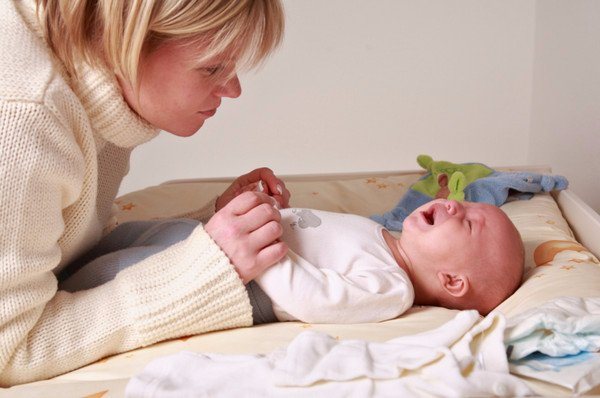
The third possible cause of functional constipation is an unhealthy lifestyle. If a child sits a lot and spends little time outdoors in active games, his muscles do not receive full load. Weak abs and atrophied muscles of the anterior abdominal wall also have a depressing effect on intestinal motility.
Unfortunately, psychological factors are far from the least important among the causes of childhood constipation. The cleanliness of the toilet, its accessibility, comfortable temperature and pleasant smell in it - all this at the subconscious level helps us empty our intestines without hindrance. If a child is unexpectedly deprived of at least one of the external conditions under which he is accustomed to solving his delicate problems, he may well begin to experience first psychological, and then completely objective, physiological difficulties with bowel movements.
Did you know? Surprisingly, the problem of constipation is usually unknown to residents of communal apartments with one toilet “for thirty-eight rooms”: they simply cannot afford such a “luxury”. This is further confirmation that constipation very often occurs in the brain, and not in the intestines.
Psychological causes of constipation include other negative factors - stress, emotional (or physical) overload, problems in the family or school. In other words, any problems associated with the nervous system very often negatively affect the normal functioning of the intestines.
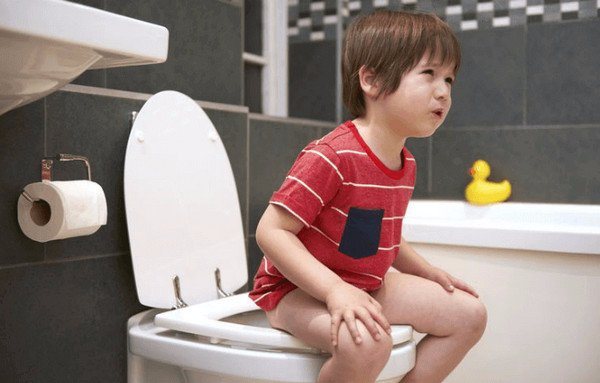
Finally, constipation can be caused by the presence of intestinal parasites in the baby’s body, such as pork or bovine tapeworms, whipworms, and roundworms. But the presence of Giardia in the intestines, as a rule, does not cause difficulties with bowel movements.
Causes and risk factors
Constipation in a 2-year-old child, like constipation in a 7-year-old child, occurs due to a disorder of intestinal motility and the work of a coordinated group of pelvic floor muscles. A variety of reasons lead to the occurrence of this condition, including the following:
- Photo: Causes of constipation in children
are organic changes; - eating disorders;
- dental diseases;
- gastrointestinal diseases;
- taking certain medications;
- introduction of complementary foods (children under 1 year);
- presence of chronic diseases;
- dehydration;
- psychological factors;
- congenital intestinal anomalies;
- ingestion of a foreign object;
- use of artificial formula for feeding.
Constipation in infants is considered the most dangerous. Most often, this condition is caused by improper feeding, which does not allow nutrients to be absorbed correctly and evenly. A sharp lack of plant fiber can also provoke the development of constipation.
Parents with emotional and impressionable children need to be careful. Constipation in a 3 or 4 year old child may occur during potty training. Coercion and excessive imposition of incorrect motivation by parents can form a strong psychological belief in the child that going to the toilet is bad.
Over time, this problem can become more than serious. The child may deliberately delay the act of defecation, which over time will lead to loss of sensitivity of the rectum, and then to chronic constipation.
Clinical manifestations
Constipation in our minds is always associated with rare visits to the toilet. But is the absence of bowel movements for, say, a day always a problem worth worrying about? It turns out that if we are talking about very young children, then no.
Important! For a breastfed baby, bowel movements every other day or even once every three to five days, provided there are no signs of poor health, is the absolute norm. Moreover, this means that mother’s milk is of high quality, it is ideal for the baby and is almost completely absorbed by his body!
You should be concerned if, in the absence of bowel movements for several days, the child shows signs of anxiety, cries, is capricious, and does not gain weight well.
Symptoms of constipation include:
- a feeling of pain, heaviness, “bloating” in the abdomen, cramping pain without clear localization (after defecation the condition immediately stabilizes);
- severe gas formation, rumbling in the stomach;
- leakage of feces in small quantities (encopresis) - it can manifest itself in the fact that a child who has not visited the toilet has panties stained with feces;
- painful sensations during bowel movements;
- mood changes - fatigue, loss of appetite, weakness, irritability;
- hard and tense stomach;
- blood in stool;
- very hard stool, often in the form of lumps or balls.
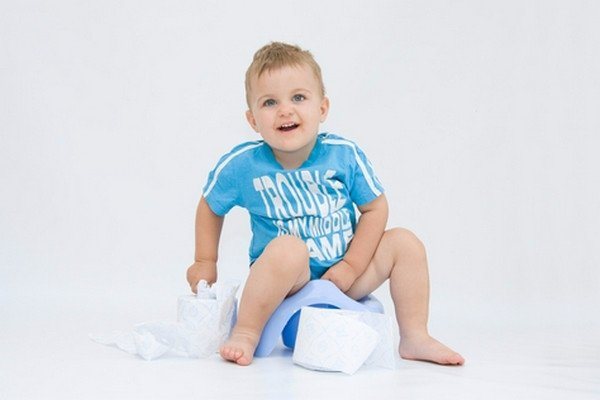
And, of course, the main symptom of constipation is infrequent bowel movements.
The normal frequency of bowel movements is a very relative concept. In infancy, it can be several days, but as the child grows up, the stool usually becomes systematized. Thus, for children over two years old, the norm is to visit the toilet from twice a day to once every two days. However, if the child feels well, you should not specifically count how many times he empties his bowels. Excessive attention to this issue, especially if we are talking about an older child, can cause just those psychological problems that we talked about above.
Concept of constipation
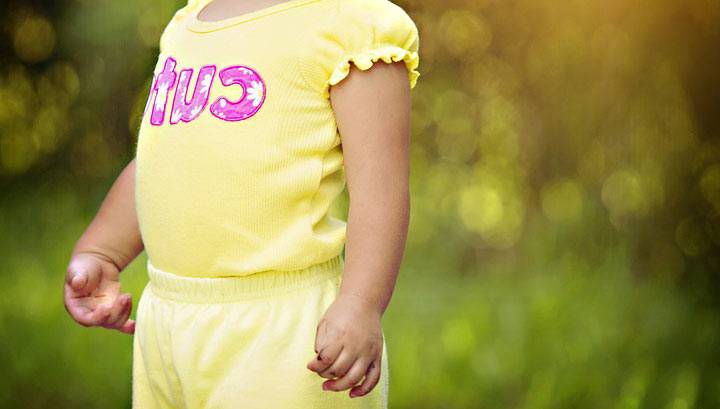
Constipation is a disorder of the intestines. It is accompanied by an increase in the intervals between acts of defecation in comparison with the physiological norm, which is considered optimal for a certain age category of a person. Constipation is also commonly referred to as insufficient bowel movements.
Constipation in adults most often occurs due to poor lifestyle and diet. As for children, everything is much more complicated here. Every parent should be especially attentive to the well-being of the child and his stool. Stool frequency, color and consistency can provide important information regarding the baby's condition and well-being. You should also pay attention to accompanying symptoms.
Examination and diagnosis
If a child has the symptoms of constipation described above, and reasonable first aid measures have not led to relief of his condition, the baby may need to be examined. At least to make sure that there are no serious pathologies that caused constipation.
Such an examination begins with a preventive conversation. The age of the child is clarified, specific complaints are clarified (in addition to the violation of the frequency of stool), living conditions (temperature and humidity in the room, daily routine, etc.), diet, amount of fluid drunk, the child’s visit to a child care facility and the connection between the first signs of constipation and the onset of constipation. such a visit, etc. Very often, already at this stage, parents receive from the doctor the necessary recommendations that help solve the problem without special treatment.
If the doctor detects certain alarming symptoms, additional examination may include:
- rectal examination of the rectum (this makes it possible to detect existing cracks, scars, narrowing of the lumen, as well as neoplasms);
- Ultrasound of the pelvis, kidneys, abdominal cavity;
- X-ray or MRI of the spine (to exclude pinched nerve);
- stool analysis (for dysbacteriosis, for the presence of intestinal parasites, as well as a comprehensive study of the composition of stool);
- fibrogastroduodenoscopy.

Specific diagnostic methods that are used in such situations are anorectal manometry, endosonography, scintikolodefectography, electromyography, sphincterometry, colodynamic examination of the rectum and others, however, in most cases, the diagnosis and treatment of constipation does not require such complex examinations.
At the same time, to establish the cause of constipation and eliminate it, the therapist may need to consult with specialized specialists, in particular, a neurologist, gastroenterologist or psychotherapist.
First aid
If constipation in a child is not caused by any intestinal abnormalities, first aid to a small patient can be provided by the parents themselves. Of course, in the future it is important to try to adjust your child’s lifestyle and diet, but right now you need to help him have a bowel movement.
The most famous and radical remedy for constipation is an enema. Let’s immediately make a reservation that, strictly speaking, children should be given it only as prescribed by a doctor. If you decide to carry out this procedure at home, do it correctly. The water for the enema must be boiled, but cooled to room temperature (warm water will provoke the absorption of toxins released as a result of stagnant feces into the blood, and cold water will only intensify intestinal spasms).
Important! The volume of the enema should correspond to the age of the child: five-year-old children need to be given 0.5 liters of liquid, children from two to five years old - no more than 300 ml, babies over one year old - up to 250 ml, from six months to a year - up to 200 ml, three-month-old children - 60 ml , from birth to three months - 25-40 ml, depending on the exact age.
The enema fluid should be administered very carefully and slowly.

The next first aid method is to insert gas tubes into the anus to mechanically stimulate intestinal motility.
Rectal suppositories and special microenemas are also used.
Symptoms
Constipation in children is not just the absence of bowel movements for several days. This condition is manifested by a number of symptoms. They are typical for both infants and older children:
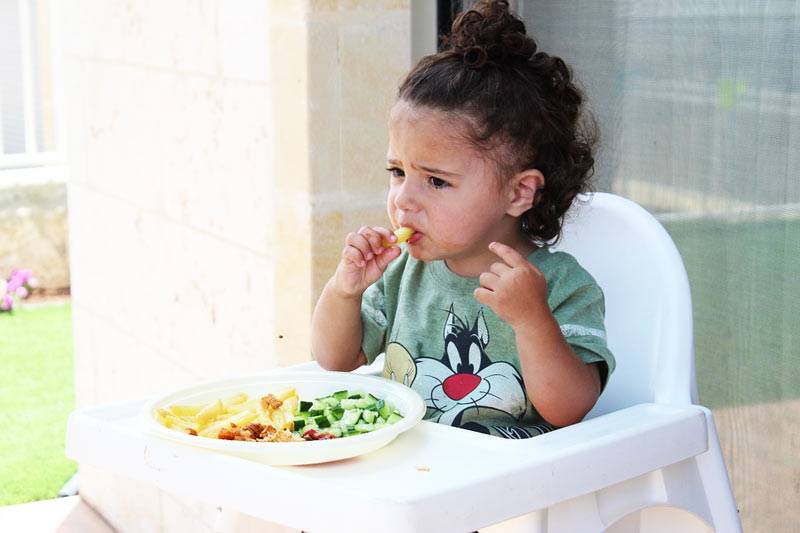
Poor appetite due to constipation in a child
- dense and dry feces;
- smearing - characteristic marks remain on the child’s underwear;
- blood in stool, on underwear, on toilet paper;
- stomach ache;
- lack of appetite;
- malaise;
- anxiety.
Frequent constipation indicates problems with the gastrointestinal tract. Parents should first of all pay attention to the child’s well-being. If, in addition to constipation, the symptoms include nausea, fever, vomiting, then the baby needs a qualified specialist.
What to do, how to help a child
When first aid has been provided, it’s time to think about how to make sure that you no longer have to resort to such unpleasant and even humiliating events.
For the treatment and prevention of constipation in children, such drugs as Acipol, Lactobacterin, Duphalac are suitable.
Nutrition correction
For this purpose, first of all, you should adjust the child’s diet. Since the main problem with constipation is hard stool and/or weak intestinal motility, we act in this direction.
The diet should consist of:
- Products containing coarse plant fiber. These are vegetables and fruits, the best being carrots, zucchini, pumpkin, cauliflower and Brussels sprouts, plums, melons, and watermelons. Cucumbers and tomatoes are less rich in fiber. If you have a choice between juice and whole fruit, choose the latter. In addition, preference should be given to raw vegetables, and if you heat-treat them, stick to al dente (undercook a little or leave them half-raw).
- Bran. This is also an excellent stimulator of intestinal motility, in addition, they remove bad cholesterol and other harmful substances from the body.
- Gray cereals, especially buckwheat.
- Foods containing potassium - apricots, peaches, plums (raw or dried), asparagus, walnuts.
- Fermented milk products (best in the morning on an empty stomach).

An important condition is that the child should eat a large amount of food (if it is vegetables, such a lunch will not be too high in calories). We need to fill the intestines and get them working.
Important! Food should be as coarsely processed as possible (not ground, twisted or overcooked).
Another important condition is to give your child as much water as possible. In the morning on an empty stomach, the baby should drink at least 200 ml of a cool drink, then during the day receive at least another liter in the form of compotes, soups, juices and clean, unboiled water.
Medications
It is known that laxatives are very often used for constipation. This method of treatment is also applicable for children, but you need to know that such drugs act differently. In particular, they can be aimed at:
- fluid retention in the intestines;
- strengthening its peristalsis;
- increasing the volume of its contents.
For this reason, it is very important to understand what exactly you are giving to your baby.
For example, if a child has accumulated hard stool in his body and is given a drug that increases intestinal contractions as a cure for constipation, serious trouble can occur. In order not to harm their children, parents should therefore consult a doctor, not a pharmacist. Nevertheless, self-medication (or rather, treating your child without consulting a doctor) in this case is quite acceptable. But only on the condition that the baby has no other symptoms besides constipation. Otherwise, the therapy is determined by the doctor, and, most likely, it will not be limited only to laxatives.
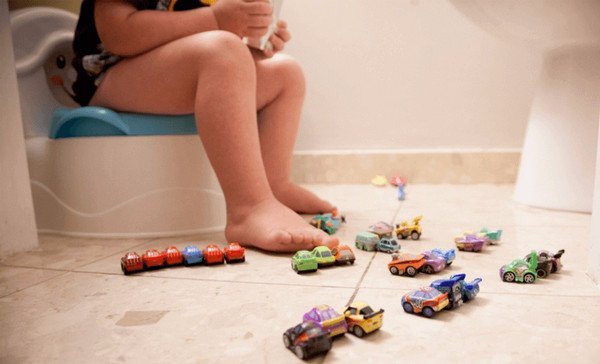
So, without a doctor’s prescription, a child can be given a mild laxative containing senna (Regulax, Senadexin, Glaxena and others) or liquid oils (castor, vaseline, almond, olive) for constipation. At the same time, parents should understand that the goal of treatment is not just a one-time bowel movement, but the development in the body of a reflex to regular bowel movements with a certain frequency. Therefore, having selected the appropriate dose of the drug, you need to continue taking it for at least 10 days (preferably up to two weeks). If the medicine does not help, contact your doctor immediately.
Safe medications for the treatment of childhood constipation are also:
- lactulose syrup (under any trade names, and you don’t have to buy expensive ones, you can use domestic ones). This drug has virtually no age-related contraindications. It stimulates the proliferation of bifidobacteria and lactobacilli, which is why it is sometimes even added to dairy products;
- suppositories with glycerin (it is not absorbed by the body and does not harm it);
- candles with sea buckthorn oil.
Physiotherapy, massage and therapeutic exercises
Increasing physical activity and special procedures will also help develop and consolidate the habit of emptying the intestines at the same time.
For example, regular morning exercises are extremely beneficial. After the child wakes up, drinks a glass of cool kefir or juice and performs several active exercises, feed him a “proper” breakfast and ask him to squat down, pressing his legs tightly to his stomach. If the urge to defecate is not apparent, massage the baby's tummy, while the child should rhythmically contract the muscles of the anus (for younger children, the mother massages the point between the tailbone and the anus).

For constipation, children are advised to take long walks, fresh air, active games, swimming, and skating. There are also special exercises aimed at stimulating bowel function, but a much greater effect can be achieved by simply playing football with your child until you drop. Offer the little ones a fun game: collect small objects scattered on the floor without getting down on all fours or squatting.
What not to do
For constipation, it is strictly contraindicated:
- poking in the anus with a thermometer and other objects;
- sticking laundry soap into a baby’s butt (this is an original Soviet know-how, which causes real horror in civilized countries);
- endure and restrain the urge to defecate;
- eat high-calorie, chopped or overly processed and refined foods;
- drink carbonated drinks and boiled water;
- sit at the computer for days on end;
- use laxatives and other drugs without a doctor’s prescription (except for the drugs mentioned above).
Prevention measures
To prevent your child from experiencing constipation, you need to follow simple rules:
- the room where the child is located should be cool and humid;
- The baby’s nutrition must be correct;
- he should receive plenty of fluid;
- going to the toilet should not be associated with psychological discomfort; you need to work on this especially seriously.
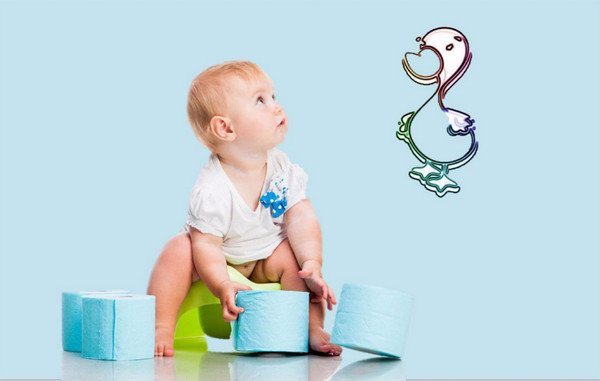
Constipation, even in childhood, is a delicate problem, but this does not mean that it is not necessary to talk about it. In the vast majority of cases, difficulties with bowel movements are not associated with any serious diseases, but they can cause serious inconvenience to the child, both physical and psychological. The sooner parents notice the disorder, the more tact and wisdom they show, the more painless the recovery process will be.
Constipation Diseases of children
Causes of constipation
The most common causes of constipation in children aged 10 months are primarily related to dietary habits. Among them:
- insufficient amount of fluid consumed by the child;
- stopping breastfeeding;
- frequent changes of mixtures;
- eating foods with a fixing effect - rice, pasta, baked goods, etc.
However, constipation can also be caused by reasons not related to nutrition:
- sedentary lifestyle;
- pathologies of the development of the gastrointestinal tract;
- strong fear.

